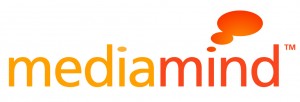Jordan Khoo, Regional VP APAC, MediaMind, Discusses the State of Evolution in Southeast Asia
by Romany Reagan on 11th Dec 2012 in News


The rate of growth in Southeast Asia at the moment is some of the strongest in APAC. ExchangeWire caught up with Jordan Khoo, Regional Vice President of APAC at MediaMind, to discuss the state of evolution in Southeast Asia and how MediaMind are navigating the diversity of the region.
Can you describe the MediaMind business across the Southeast Asia region? What is the current stage of evolution of ad server deployment across the region?
Southeast Asia, as a whole, still represents less than 5% of digital adspend, but it is growing very encouragingly, at double-digit percent growth, across the region. We set up shop in the region six years ago and have certainly seen very positive growth momentum, but it is still very much an investment market for us. Markets like Singapore will obviously be the most advanced markets in terms of usage, focusing on Direct Response campaigns, which utilise feature sets of conversion tracking, retargeting and Dynamic Creative Optimisation (DCO). The rest of the markets are a lot more brand-focused, which have many more rich media and video components into the mix.
What diversity do you see from market to market across APAC? Does MediaMind sell capabilities across the entire stack, or predominantly around ad serving/rich media?
The market across APAC is very diverse and extreme. Markets like Australia are very advanced in usage, and adoption of the entire stack is very apparent. For markets like China, adserving is just beginning to take flight, and clients are finally beginning to see the value of third-party adserving. Let's just hope it's not false sense of hope again, for the countless time.
Are there typical verticals/industries that drive the innovation around ad decisioning? Are clients beginning to bring custom data into that process?
DR-heavy clients are very data-centric. Unlike NA & EMEA, where data brokers are a lot more common and apparent, APAC clients generally are hampered by the lack of data, whether in external data sets or internal data sets. However, we believe that data is going to be the main focus for a lot of clients over the next few years, and their data strategy cannot be more critical in their marketing campaigns.
Are advertisers taking more ownership around their technology needs, or is it still mainly driven by agencies? Do you see globalised efforts drive the speed of adoption, or are there more local, specialised businesses driving the market?
Agencies are the agent of change and the shining light in the complicated marketing landscape for clients. The ecosystem can now count over a hundred technologies that power next generation marketing, and it'll be nearly impossible for advertisers to try to figure out everything on their own. The agencies that we work with have been great in recommending and justifying the value of the technology investment to their clients. From an approach perspective, we have seen a lot of high-level conversations at a global level that have now being rolled down to the local level for implementation.
Has the Peer39 product been launched in APAC? Is the technology geared to scale a contextual proposition across multiple languages and markets?
The Peer39 product has been in the APAC market via global partnerships like Brandscreen, Mediamath, Turn and AppNexus for just over two years now. We continually add new partners as they emerge. As of September of this year, we added simplified Chinese to support the growing demand in that market to our already impressive roster of six languages, and we will continue to roll out other languages for this important territory over the next few months. To give a little context, its not just about being able to produce category, quality and safety attributes in new languages, but being able to do it at the scale of RTB. This is where most other companies fall short. Peer39 provides information on more than 30 billion ad impressions globally on a daily basis, and that number continues to grow as the RTB continues to accelerate.
What do you expect to see over the next 6-12 months?
Data-driven advertising, video advertising across multiple screens and naturally Programmatic Buying. Dare I say this is gonna be the 7th round for the “Year of Mobile"?
AgencyAPACBrandingDataMobileProgrammaticTechnology








Follow ExchangeWire